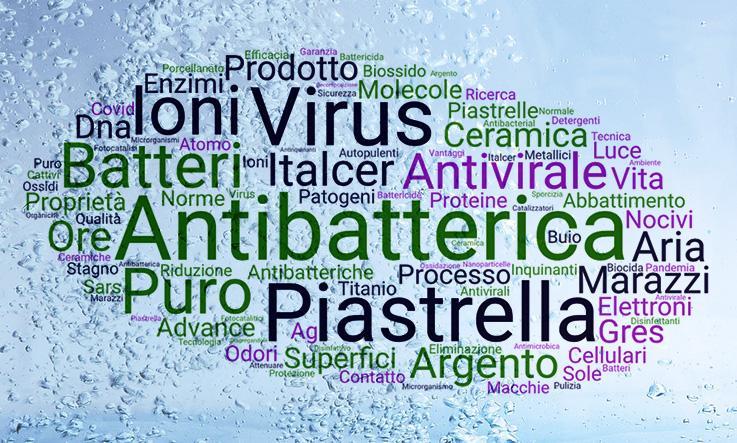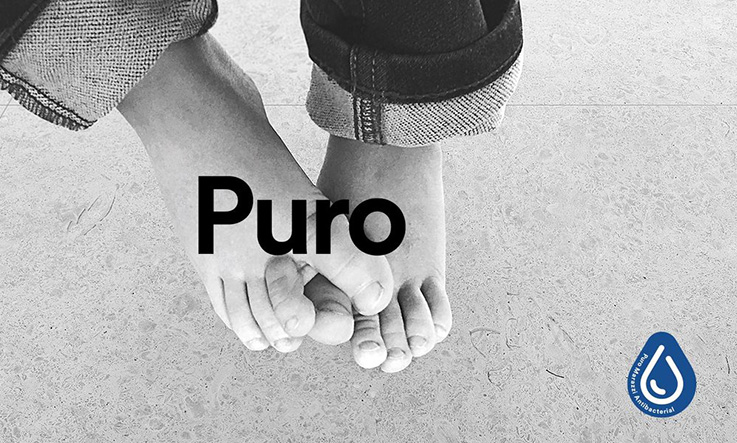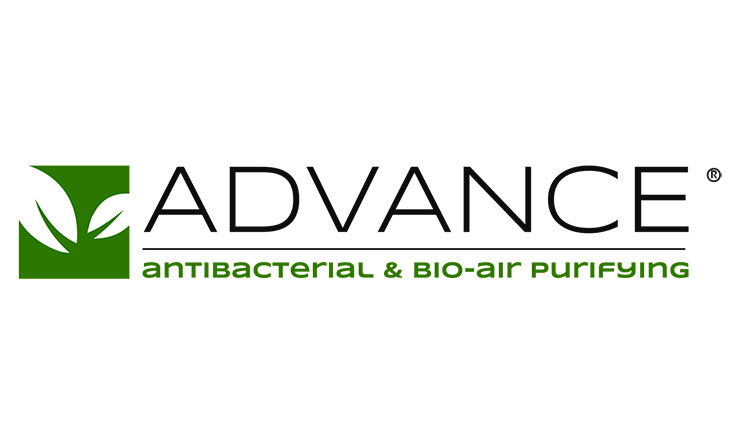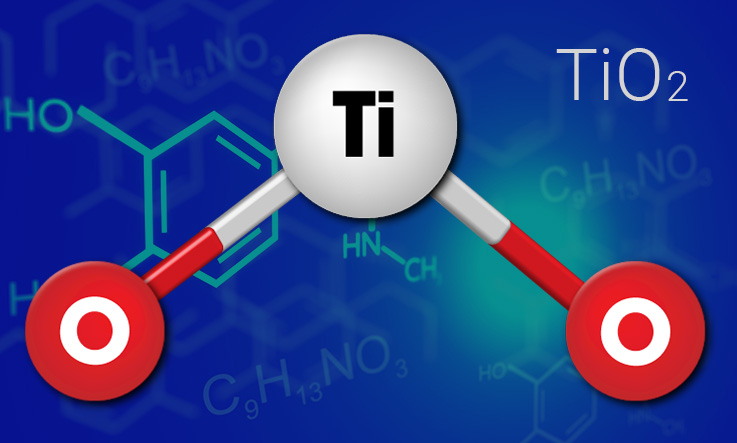
Antibacterial tiles: how do they work?
Self-cleaning, antiviral and antibacterial tiles have recently appeared on the market. Almost every manufacturing company has engaged in research, which was understandably accelerated due to the spread of the Covid Sars 19 pandemic. In this article we will analyse the solutions presented by Marazzi and Italcer as they represent the two most used systems for the creation of these particular porcelain stoneware tiles.
It is important and necessary to underline, however, that if a person is infected with a virus and hugs another person or sneezes in their presence, the antiviral tile that is under him does not solve the problem. Although in both cases, the advantages produced by these products are beneficial, it should be noted that ceramics with antibacterial power cannot ensure total and complete resistance to infection if it is not regularly cleaned with disinfectants and detergents.
Puro by Marazzi

The technology used to produce these antibacterial surfaces is that of silver ions, which are already known for its highly toxic properties for most single-celled organisms, such as bacteria and viruses. In fact, it has been shown that even small concentrations of silver ions, Ag+ lead to the death of pathogens. But how?
Puro Marazzi Antibacterial is based on the synergy of some minerals with the bactericidal properties of silver. Metal ions interact with various components and cellular structures of bacteria, such as enzymes, proteins, cell membranes and DNA. In this way the activity of the proteins and enzymes themselves is blocked and the DNA is damaged, which results in the death of microorganisms.
The effectiveness of this technique lies in the ability of the silver nanoparticles - which are incorporated in the ceramic tile before firing at 1200 °C until they become an integral part of the product - to release ions much more easily when entering in contact with pathogens.
While not explicitly referring to specific regulations, Marazzi certifies that the bactericidal action, tested according to the strictest international standards, remains active for the entire life cycle of the surfaces, eliminating up to 99.9% of bacteria and other microorganisms and harmful substances on the product.
Integrated antibacterial protection makes ceramic an intrinsically cleaner product. The reduced microbial load means that the product is less likely to facilitate the transmission of harmful bacteria from one surface to another.
Additional benefits of Puro
• Odor and stain reduction
• Guarantee for surfaces in contact with food
• Extension of products’ average life time
• Permanent antibacterial activity, even in the dark
• Guaranteed safety for people, animals and the environment
You can find further information in this article written by Marazzi
Advance by Italcer Group

Unlike Marazzi, Italcer's has chosen to rely on photocatalytic processes to obtain an antibacterial and antiviral ceramic, which is able to eliminate 100% of viruses and bacteria on the tile’s surface.
Also in this technology the process takes place during the creation phase and not after it, by adding titanium dioxide and tin dioxide into a mixture, and then fire it at over 1200 ° C, thus making the ceramic surface hostile to the proliferation of viruses and bacteria.
How does it work?
Unlike silver ions, this process requires light to completely eliminate viruses and bacteria. It is a chemical reaction that imitates the photosynthesis in absorbing and transforming pollutants into harmless elements. The chemical process of which we are talking about is an oxidation, or the loss of electrons by an atom, which starts thanks to the combined action of light (solar or artificial) and air. This loss of electrons is always compensated by a reduction, that is, by the acquisition of electrons by another atom in an oxidation-reduction, which is one of the ways in which matter is transformed. This transformation leads to various interesting consequences such as the cut of polluting molecules and the favouring of biocidal, antimicrobial and disinfective effects such as damage to the membrane of infectious bacteria and the elimination of viruses.
All this, however, would take place extremely slowly if it weren’t for catalysts, which capable of speeding up the entire process. Titanium and tin dioxides perform this function and lead to the elimination of viruses from the surface in just 6 hours and that of bacteria in 8 hours.
The anti-polluting properties of ADVANCE® stoneware also improve the quality of the air we breathe. If installed outdoors, it manages to mineralize 20.7% of nitrogen oxide molecules, reducing them to CO2 and H2O in just three hours, thus significantly improving the quality of the air The photocatalysis obviously also acts on bacteria and molecules of stains and dirt, combating them and facilitating the cleaning of surfaces. Finally, the decomposition of organic molecules helps to mitigate bad odours.
You can find a more complete presentation of the project, accompanied by certificates and regulatory standards that prove the reliability of all the data reported at the website www.advanceceramic.it.
The Advance collections
But how long does the effect last?
This question is obviously still unanswerable, given the recent appearance of these products on the market. Obviously, wear and frequency of use limit the duration of these treatments, especially if it is the case of surface applications. Conversely, if the nanoparticles are included, as in the cases described above, in the mass of the material, the effectiveness is prolonged for very long times, even for decades.
Silver ions are harmless but what do we know about titanium dioxide?

Let's immediately avoid possible misunderstandings: although the International Agency for Research on Cancer has classified TiO2 in class 2B as a possible human carcinogen, it has also highlighted that there is a lack of certain evidence to support this thesis.
Also the American NIOSH (National Institute for Occupational Safety and Health) states that there is insufficient evidence to classify TiO2 as a potential carcinogen, although there is some concern about the potential for carcinogenicity of the nanoparticles themselves. In fact, much of the experimental data derives from tests performed on mice, rats and hamsters and no data currently clarifies whether these results can be associated with an increased risk also for human beings.
Even though, given the extreme variability in terms of particle size and shape and photocatalytic activity, it is not possible to reach a definitive conclusion yet, it is worth remembering that:
• during the production phase, TiO2 remains incorporated in the ceramic mixture, since it is chemically linked to the hydrated phases;
• there is no foresight of TiO2 nanoparticles that are released by photocatalytic ceramics, both in air and in water (even after an abrasion treatment).
• the Risk Assessment Committee of the European Chemicals Agency has recently confirmed that the classification in class 2B is correct and that there is not enough evidence to insert TiO2 in class 1.